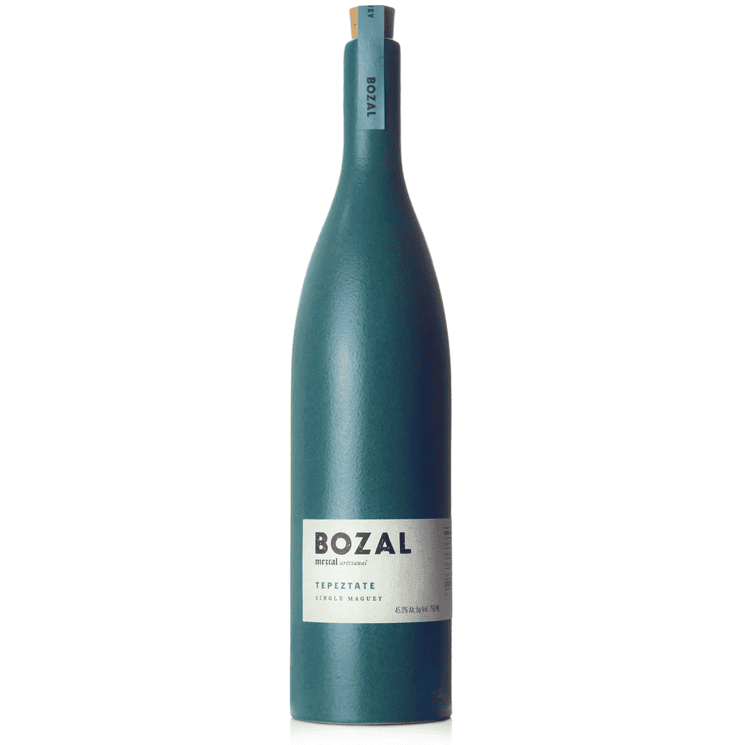
Bozal Tepeztate Mezcal Artesanal
On the steep precarious hillsides of Oaxaca and Guerrero varieties of agave, indigenous to the region, grow wild and are heavily sought after by the local mezcaleros. These varietals produce flavors that are exotically intense, with rich earth tones and savory smokiness. From the heart of the maguey these flavors are traditionally extracted to produce mezcal that is wildly refined. Because we at Bozal believe that something wild produces a far richer spirit.
Agave Tepeztate
The Tepeztate, a subspecies of the Marmorata Family of agave, has a very distinct, erratic leaf structure and flourishes best on the sides of steep, rocky cliffs. The Tepeztate produces beautiful quiotes at the end of life which flower a rich yellow before turning to seed. This agave offers a powerful, unique aroma dominated by floral characteristics.
Taste
Herbaceous aromas, with a touch of wet stone on the nose, accompanied by grapefruit zest, orange flower and pine. Fresh florals, white pepper and minerals are highlighted on the palate with prominent notes of spice on the finish.
Craft, artisan, handmade Mezcal to the extreme. Celebrating the unchartered side of the Mezcal world and the wild agaves used to produce such rich spirits.

Explore a World of Spirits and Liquor through our Comprehensive FAQ Section.
Discover a World of Spirits and Liquor in our Helpful FAQ Section.
Types of Spirits
- Whiskey: Made from fermented grain mash and aged in wooden casks.
- Vodka: Typically distilled from grains or potatoes and known for its clear, neutral flavor.
- Rum: Produced from sugarcane byproducts like molasses or sugarcane juice.
- Tequila: Made from the blue agave plant, primarily in the area surrounding Tequila, Mexico.
- Gin: Distilled with botanicals, primarily juniper berries, giving it a distinctive flavor.
Production Process
- Fermentation: The process where yeast converts sugars into alcohol.
- Distillation: Separating alcohol from the fermented mixture to increase its concentration.
- Aging: Storing spirits in barrels to develop flavors over time.
Tasting and Pairing
- Tasting Notes: Learn to identify different aromas, flavors, and textures.
- Food Pairings: Discover which spirits complement various dishes, enhancing the dining experience.
Cocktails and Mixology
- Classic Cocktails: Recipes and techniques for making popular drinks like the Old Fashioned, Martini, and Mojito.
- Mixology Tips: How to balance flavors and create your own cocktail recipes.
History and Culture
Origins: The historical background of different spirits.
Cultural Significance: How spirits are enjoyed and celebrated around the world.

